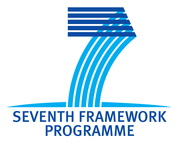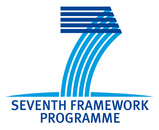|
In a new article published in Cyberpsychology, Behavior, and Social Networking, SIMLAB researchers Lemi Baruh and Zeynep Cemalcılar discuss the effects of sharing sensitive information in social media platform Twitter.
The article focuses on how viewers of a Twitter account react to sensitive information they see on a Twitter profile. The findings indicate that while viewers of a Twitter account may initially stick around longer to look at a profile containing more sensitive information, they find profiles sharing sensitive information less attractive. Baruh and Cemalcılar link this reaction to satisfaction of a voyeuristic curiosity. Just like the rubbernecking behaviour of "a driver passing by a car accident, the satisfaction of voyeuristic curiosity through profile browsing on Twitter is temporarily enjoyed at the moment when the opportunity is available". Below is the abstract: Social networking sites offer individuals an opportunity to document and share information about themselves, as well as engaging in social browsing to learn about others. As a micro-blogging site within which users often share information publicly, Twitter may be a particularly suitable venue that can help satisfy both of these motivations. This study investigates how viewers react to disclosure of intimate information on Twitter. Specifically, the impact of disclosure intimacy is studied on attention that viewers pay to a Twitter page, reduction in their uncertainty about the attributes of the page owner, and their interpersonal attraction to the owner of the page. A total of 618 adult online panel members viewed one of six Twitter pages that contained either low-intimacy or high-intimacy tweets. Analyses indicated that viewers exposed to the Twitter pages containing high-intimate information paid more attention to the pages, were more confident about the attributions they could make about the page owner, yet were less willing to pursue further socialization with the page owner. Furthermore, attributional confidence mediated and perceived similarity moderated the relationship between disclosure intimacy and interpersonal attraction. This interaction between disclosure intimacy and perceived similarity was such that viewers who considered the page owner to be similar (dissimilar) to themselves were more (less) socially attracted to page owners who disclosed intimate information. These findings suggest that while intimate information shared on a Twitter page draws attention, this does not necessarily result in further socialization with the page owner—an effect we named as the “rubbernecking effect” of intimate information.
1 Comment
As one of our first research project in SIMLab, we (Lemi Baruh & Zeynep Cemalcılar) had been working on developing a multidimensional privacy orientation scale. The scale is summarised in an article to be published in November 2014 in Personality and Individual Differences.
A free copy of the article is available until September 14, 2014. Abstract This study summarizes the development and validation of a multidimensional privacy orientation scale designed for measuring privacy attitudes of Social Network Site (SNS) users. Findings confirm the existence of four dimensions: (1) belief in the value of “privacy as a right”; (2) “other-contingent privacy”; (3) “concern about own informational privacy” and (4) “concern about privacy of others.” Moreover, a segmentation of SNS users based on these attitude scores reveals three types of users: (1) privacy advocates, who are concerned about both their own and other people’s privacy; (2) privacy individualists, who are concerned mostly about their own privacy, and (3) privacy indifferents, whose score on all dimensions are lower than other segments.The results indicate that the four privacy orientation dimensions and three user segments predict key differences in terms of privacy protective behavior, information disclosure, and viewing personal information of others. Programme of "Involving Citizens in Emergency Preparedness and Response Workshop" in Istanbul5/16/2014 The tentative schedule for the COSMIC Involving Citizens in Emergency Preparedness and Response Workshop, to be held in Istanbul is now ready.
Involving Citizens in Emergency Preparedness and Response International Workshop Location: Koç University Research Center for Anatolian Civilizations, Istanbul Date: September 4, 2014; Thursday For further information about the Workshop, please visit the workshop webpage at MiXLab. COSMIC (Contribution of Social Media in Crisis Management) project partners MixLab at Koç University and Hellenic Rescue Team has drafted a report on Citizens' Involvement in Emergency Communications. The report seeks to examine the various roles that citizens may have in communications during emergencies. Also, the report maps the relationship between the use of different types of media and communication technologies—including mass media, as well as new media technologies—and citizens’ involvement in emergency communications as,
The report also discusses social activism as a form of citizen involvement in crises (predominantly political crises). Particularly, the section on social activism discusses how social activist formations use media to recruit members and/or form networks, communicate ideas, and coordinate action. Finally, regarding the role that citizens can play as reporters/journalists during emergencies and crises, discuss issues related to news selection processes, types of coverage (commentary vs. news), types of sources used by citizen journalists and citizen journalists’ perceptions regarding issues like reliability of information. In order to do so, the report summarises findings from a content analysis of the articles published by citizens who reported about four emergencies/crises and online interviews conducted with a sample of citizens whose reports were content analysed. Click here for a copy of the report The purpose of this deliverable is to examine a series of European and international case studies in order to explore the ways in which new communication technologies and social media are being used in crisis situations today. Partners conducted an examination of eight different case studies, during which they described the nature of the case study, provided an understanding of how new and more conventional technologies as well as social media were used and discussed the lessons learned from the use (or lack of) of those technologies.
The report is currently under the review of the European Commission and the final version will be made available after the evaluation. The draft report is available here: http://www.cosmic-project.eu/node/24 Involving Citizens in Emergency Preparedness and Response
International Conference Location: Koç University Research Center for Anatolian Civilizations, Istanbul Date: September 4, 2014; Thursday New communication technologies play an increasingly important role during emergencies and crises, such as natural and man made disasters and political crises. Particularly social media can potentially enable citizens to more quickly share information, assist response and recovery in emergencies, and mobilize for action in political crises. This conference will examine the role of citizens as first responders, social activists, and citizen journalists at times of emergencies and crises and will focus on practical, theoretical, and ethical issues related to citizen participation in emergency/crisis response/communication. The conference will result in a set of guidelines for citizens, government authorities, first responders and industry for the most effective use of ICTs to aid citizen security during crises. Possible topics include, but are not limited to:
Submission Information:
 The COntribution of Social Media in Crisis (COSMIC) management project, funded by the Fp7-Security program is set to begin today (April 1st, 2012) and will continue until April 1st, 2014. COSMIC project will identify effective ways to utilise new information and communication technologies (ICTs) in crisis situations and emergencies for the protection of ordinary citizens. Partners of the project:
|



 RSS Feed
RSS Feed
